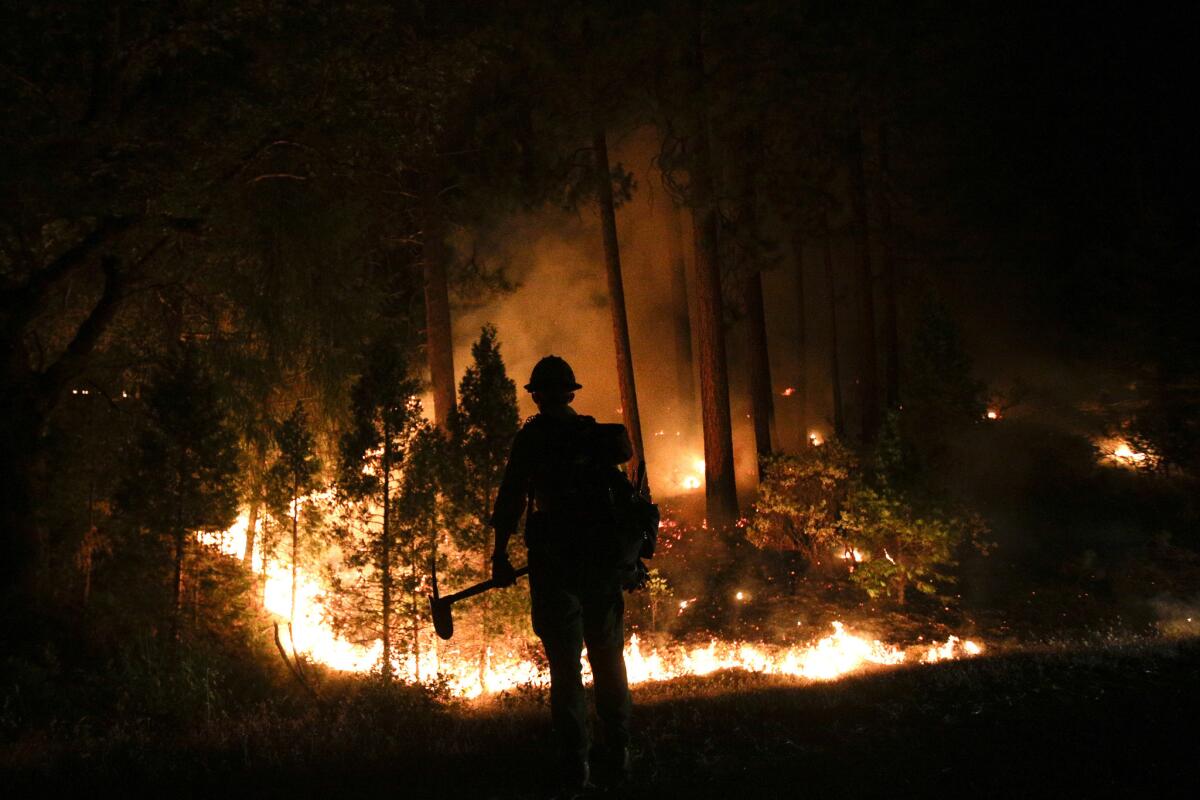Fire season tamer than expected; U.S. burn acreage far below average

- Share via
A wildfire season that began with dire warnings that dry conditions had set the stage for a year of flames across California and the West turned out to be among the quietest of the past decade.
Although 2013 was marked by two high-profile blazes, one in California and the other in Arizona, nationally the total wildfire acreage, 4.15 million, is far below the 10-year average of 6.8 million acres.
In California, the number of fires was high, but the amount of wildland that burned was slightly less than the 10-year average, according to state and federal figures.
As always, weather was the deciding factor. The fierce Santa Ana winds that can turn autumn wildfires in Southern California into monsters didn’t blow this year. And in a perverse upside of parched conditions elsewhere in the West, there wasn’t enough moisture for grassland fuel to grow, keeping blazes in check.
“All of the modeled conditions supported a lot of significant fire potential,” said Jeremy Sullens, a wildfire analyst at the National Interagency Fire Center in Boise. “But in reality, because of the drought we actually had less fuel on the landscape than we would in a normal year.”
In Nevada -- often the scene of huge, racing wildfires fueled by invasive cheatgrass -- only about 163,000 acres were blackened.
Late winter and spring storms in the South and an active summer monsoon season in the Southwest kept a lid on burn acreage in those regions.
Still, 2013 will be remembered for a lethal blaze in Arizona and the largest wildfire recorded in the Sierra Nevada in more than a century of record keeping.
In June, 19 members of a hotshot crew died in Arizona’s Yarnell Hill fire when they were overcome by 40-foot flames in a rocky canyon near Prescott, the biggest loss of firefighter lives since the Sept. 11, 2001, terrorist attacks in New York.
A state report released last week faulted the Arizona State Forestry Division’s management of the fire, concluding that the firefighters were the victims of poor planning and bad communications. The agency faces a $559,000 fine.
In mid-August, a hunter’s illegal campfire started the $127-million Rim fire, which cut across a large swath of the Stanislaus National Forest before burning into a corner of Yosemite National Park. At 257,314 acres, or 402 square miles, the Rim represents 45% of the charred California acreage, according to statistics compiled by the national fire center.
While the amount of burned land was a bit below average, the number of wildfires in California was nearly 50% greater than the 2003-2012 average.
“We’re fortunate that we did not have more extreme wind events that would have allowed the fires to burn much quicker and char even more acres,” said Daniel Berlant, spokesman for the state Department of Forestry and Fire Protection.
Kelly Redmond, regional climatologist at the Western Region Climate Center in Reno, said scientists can’t really say why the hot, dry Santa Ana winds from the interior that have historically fanned the Southland’s most destructive blazes are active in some years and quiet in others.
“It’s been really hard to tie to anything in the large-scale climate,” he said. This year is “just one of those no winds situations.”
Twitter:@boxall






